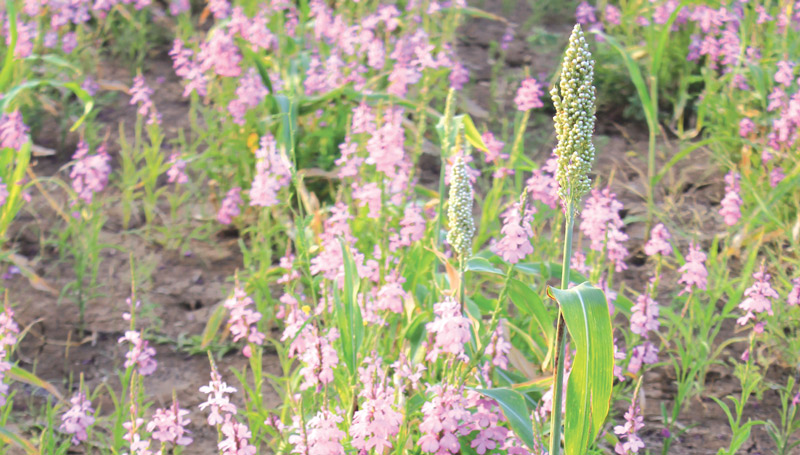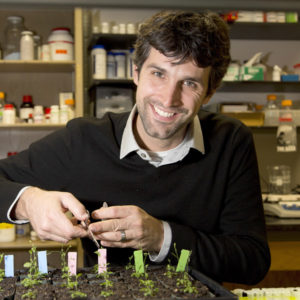Parasitic pests

Photo by Satoko Yoshida
It may sound like a narrative plucked from the pages of a science fiction novel, but there are actually plants that eat other plants. They are parasites, and they survive by attaching themselves to the roots of other nearby vegetation and syphoning off life-giving nutrients, a process that often leaves the host weakened or dead.
Parasite infestations reduce global crop yields by billions of dollars each year, particularly in developing nations where access to advanced herbicides and other control methods is limited.
Now, a team of scientists led by researchers at UGA have discovered how these subterranean thieves evolved the ability to detect and attack their hosts. Their findings could lead to new techniques to control the troublesome weeds.
“The seeds of some parasitic plants can lie dormant in soil for more than a decade, waiting to grow until they detect the presence of a host,” said David Nelson, an assistant professor of genetics in UGA’s Franklin College of Arts and Sciences. “We wanted to understand how the parasites know other plants are nearby so we could develop new ways of combating them.”
As plant roots grow, they release hormones called strigolactones into the soil. The seeds of parasitic plants are able to sense these strigolactones, which prompt them to germinate, attach to the host root and syphon off nutrients.
“It’s kind of like root radar,” said Nelson, who is also a member of UGA’s Plant Center. “But the incredible thing is that this strigolactone detection system seems to have evolved from plant genes that normally control a seed’s ability to detect fire.”
When a forest burns, compounds in the smoke and ash leach into the soil. Many plants have evolved the ability to detect these compounds, which signal that their competition—large shady trees or dense ground cover—has been destroyed and it might be an opportune time to grow.
Thanks largely to the work of Caitlin Conn, a graduate student in Nelson’s lab, researchers found that during the evolution of parasitic plants, the smoke detector gene duplicated and some copies switched to become strigolactone detectors. This critical switch is what allows the parasites to recognize and attack nearby hosts.
This finding could lead to new ways of combating parasites. Researchers may, for example, develop synthetic compounds that interfere with the receptors that parasitic plants use to sense strigolactones, making them blind to the presence of a host.
Or, it might be possible to create chemicals that mimic strigolactones. If these were sprayed over a field prior to the normal growing season, farmers could trick the parasitic plants by making them grow when there are no hosts present, a process known as suicidal germination.

